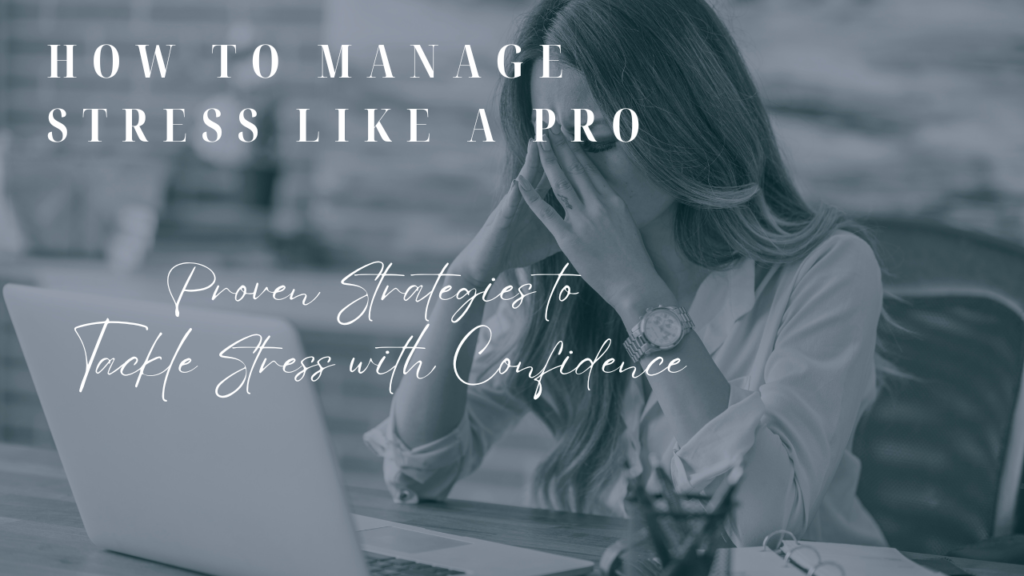How to Manage Stress Like a Pro
Stress isn’t always loud. Sometimes it just lingers in the background—like a hum you can’t turn off. You can function, but something’s always tight. Always off. You can’t sit still without scrolling. You can’t relax without guilt. And your mind? It never really shuts up. You’re not broken. You’re just running on fumes. And most people are. The truth is, life isn’t slowing down anytime soon. So managing stress isn’t about waiting for things to calm down. It’s about learning how to stay steady in the middle of the chaos. Not perfect. Not emotionless. But steady. And that takes more than bubble baths and inspirational quotes. It takes intention. Awareness. A little grit. And a willingness to slow down long enough to ask the question most people are too busy to ask: “What is this stress actually doing to me?” Step One: Notice the Cost You can’t manage what you refuse to name. So before you do anything else, take a minute and be honest—what’s this constant stress doing to you? Are you snapping at people who don’t deserve it? Losing sleep? Numbing out with food, scrolling, spending, distractions? Carrying tension in your body that you’ve just started calling “normal”? That stuff adds up. And if you’re not careful, you’ll adapt to dysfunction and call it a personality trait. You’ll say “this is just how I am” when really it’s just how unmanaged stress is shaping you. Name it. Not to wallow in it. But to finally get honest about how much it’s costing you. Because you can’t keep paying this price forever. Step Two: Find Your Patterns Stress doesn’t show up the same way in everyone. Some people lash out. Others shut down. Some get hyperproductive. Others avoid everything. So what’s your pattern? Do you get angry fast? Do you stop answering texts? Do you grind harder, thinking if you just push through, it’ll eventually go away? Do you get foggy? Jittery? Restless? Knowing your pattern gives you leverage. It tells you when to intervene before you hit the wall. It lets you see the warning signs—tight shoulders, shallow breathing, that internal “buzz” that says you’re not okay—even if you’re still functioning on the outside. Start paying attention. Your body usually knows before your mind admits it. Step Three: Control What You Can—Release What You Can’t Most of stress management is learning to sort what’s yours to carry and what’s not. There are things you can control—your sleep, your diet, your routines, your boundaries, your pace. And then there’s everything else—how people respond, what happens tomorrow, the economy, your coworker’s attitude, the world being the world. You don’t need to fix everything. You just need to be faithful with what’s actually yours. Start with what you can do. Clean the room. Go for the walk. Make the phone call. Drink the water. Turn off the notifications. Have the hard conversation. Say no when your soul says “please don’t.” Then let the rest go. Not because it doesn’t matter. But because you trying to control it is making things worse, not better. Step Four: Make Space to Come Down You’re not designed to run on high-alert all day. But modern life will keep you there if you let it. So you have to actively calm your nervous system. This doesn’t have to be fancy. You don’t need a retreat. You just need rhythm. Maybe it’s five minutes in silence before anyone else wakes up. Maybe it’s stretching at the end of the day with no music, no podcast, no stimulation—just breath. Maybe it’s praying out loud in the car like you’re actually allowed to bring it all to God, no filter. Whatever it is, let it be real. Not performative. Not another thing to add to your checklist. Just a moment where you stop reacting and start re-centering. The world won’t give you space. You have to take it. Step Five: Move Your Body Like It’s Medicine Because it is. Stress lives in your body. It’s not just in your mind. And if you’re not moving, that tension has nowhere to go. You don’t have to run a marathon. Just move. Walk fast enough to get your heart up. Dance in your kitchen. Do push-ups until you’re mad at me. Whatever works. The point isn’t calories or fitness. The point is motion. It helps your body release the stress it’s been holding onto. It clears your head. Regulates your emotions. Gets the static out. Stillness has a place—but it works better after movement. So move first. Then rest. Step Six: Talk It Out with Someone Who Gets It Stress isolates. It makes you feel like you’re the only one falling behind, the only one who can’t handle things, the only one who’s secretly not okay. That’s a lie. And the best way to break it is to talk. Find someone who won’t judge you. Who won’t give you a TED Talk. Who won’t try to fix you or top your story. Just someone who listens and says, “Yeah… me too.” And if you don’t have that? Start praying for it. Then be that person for someone else. Sometimes saying it out loud is all it takes to release the pressure that’s been building in your chest. You’re not a burden. You’re a human. Let yourself be one. Last Step: Give Yourself Permission to Rest—Before You Earn It You don’t need to hit rock bottom before you take a break. You don’t need to wait until everything’s finished to slow down. You don’t need to justify rest by hitting your goals first. You’re allowed to rest because you’re human. Not because you’re done. Not because you’ve earned it. Just because you need it. This is how you build resilience—not by pushing harder, but by learning when to stop. So take a deep breath. You’re doing better than you think. You’re not weak for being stressed. You’re just ready to stop letting it run your life. Now do one thing that
How to Manage Stress Like a Pro Read More »


